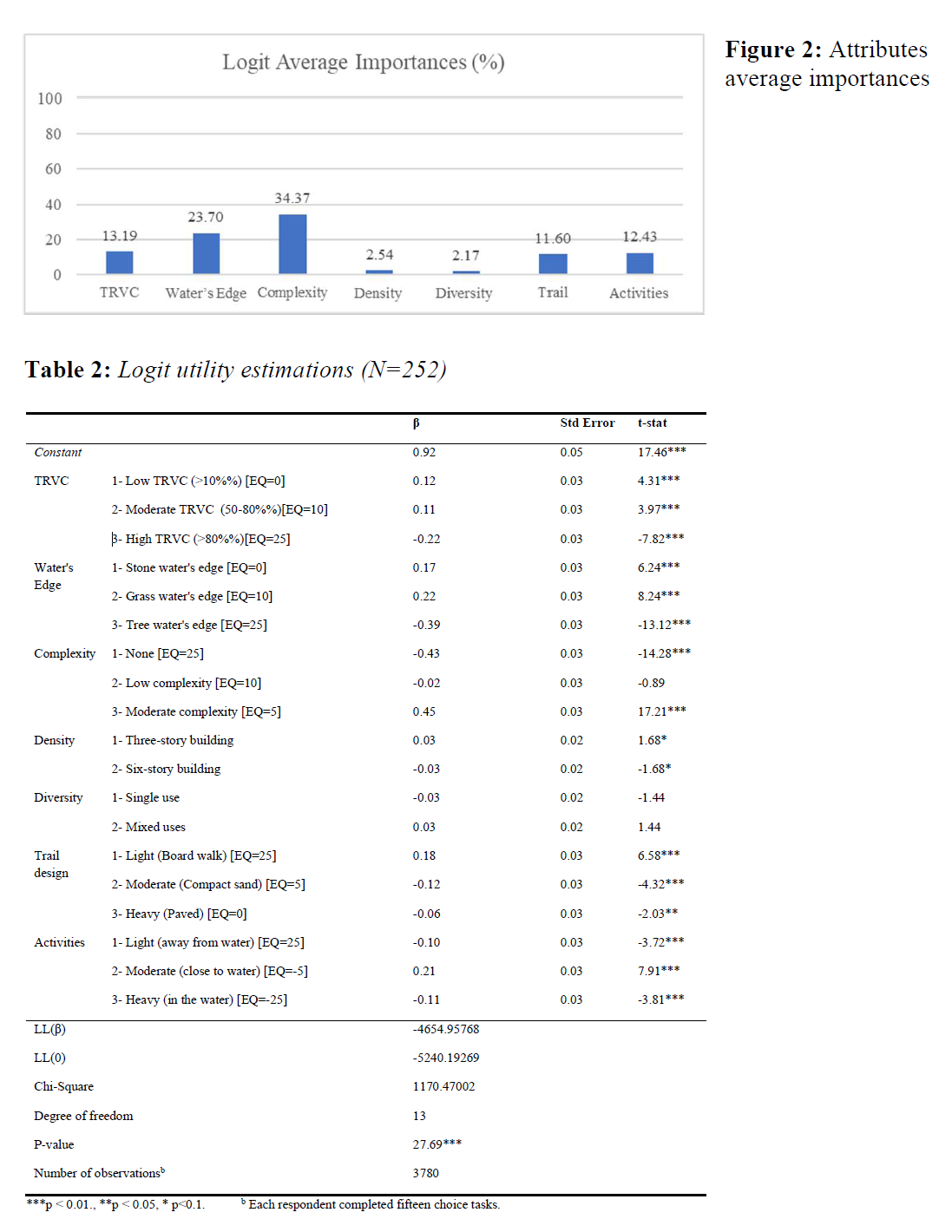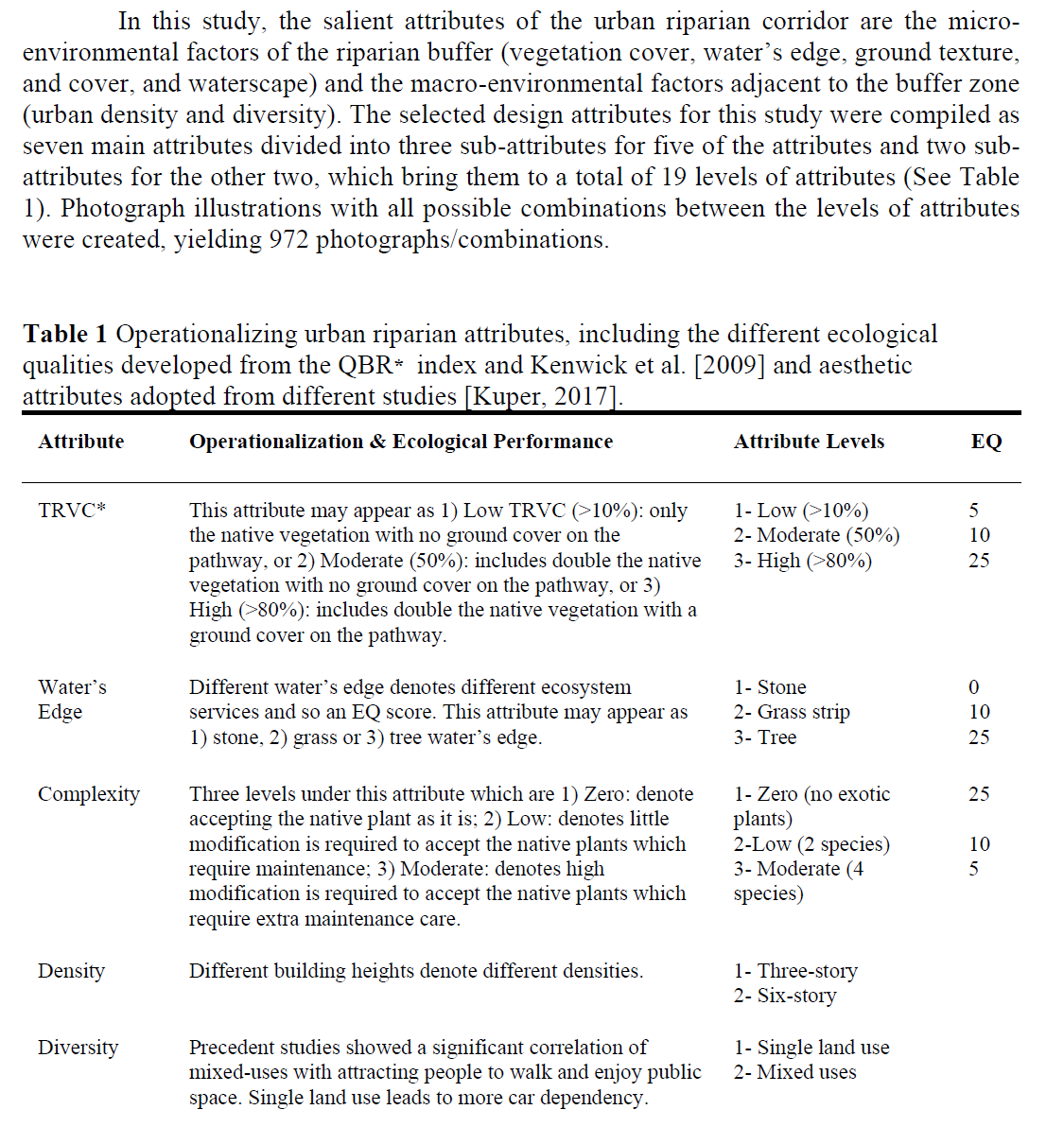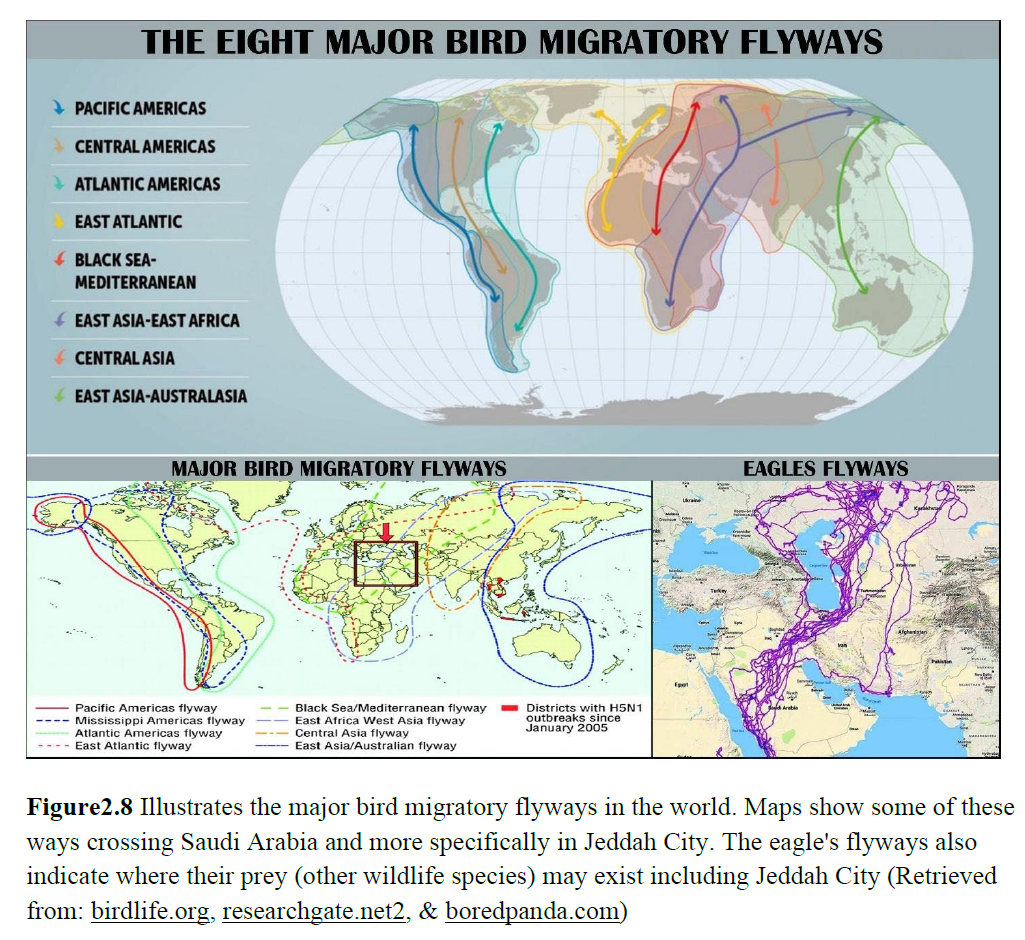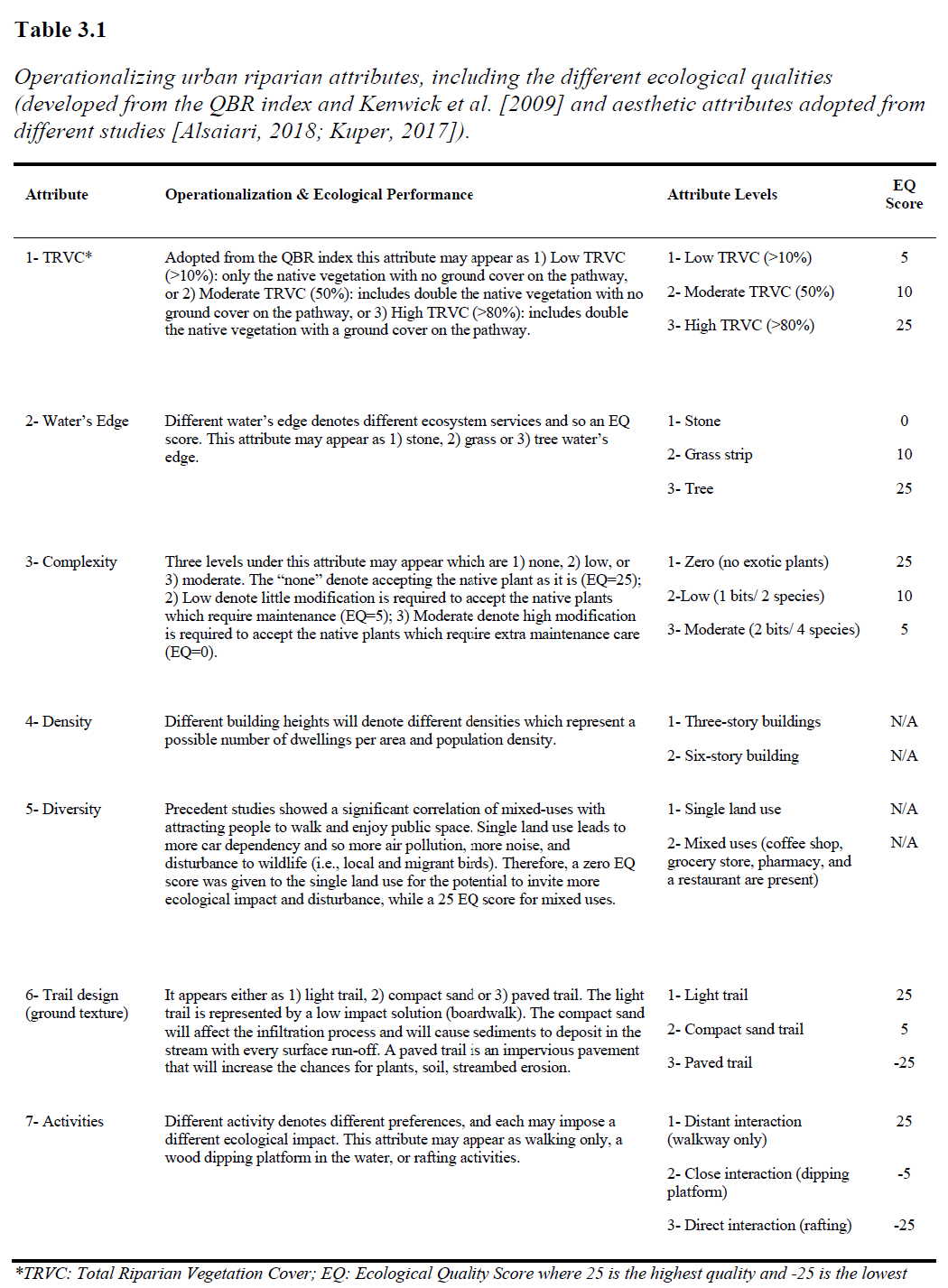Ecological and Aesthetic Factors Preferences of Urban Riparian Corridor in Arid Regions: A Visual Choice Experiment
Advisors: Chair: Mintai Kim, Co-chair Dean Bork, Committee: Patrick Miller, Robert Schubert,
Khaled Hassouna, Hamad Alsaiari
Khaled Hassouna, Hamad Alsaiari
[Awarded the best doctoral research in the LAR Department]
Abstract
The aim of this study is to examine the public preferences for urban riparian corridors in arid regions, by testing to what extent people are willing to trade-off unmaintained ecological landscape for aesthetics offered by specific micro and macro environmental factors. Landscape design reflects ecological and aesthetic values, and trade-offs are often made between the two in practice. In arid regions, water scarcity means riparian corridors are the richest landscape typology and the only blue-green links for hundreds of miles. Pressure from urbanization and lack of eco-literacy contribute to negative feedback loops which present dire challenges for migrating avifauna and regional wildlife. Regarding natural resources and biodiversity, where multiple deliverable ecosystem services rely on the quality and health of that ecosystem, riparian systems with high biomass are more desirable. Although this can be achieved with low or no maintenance riparian buffers, these unmaintained ecological landscapes play an intrinsic role in sustaining the global ecosystem services and are important for the survival of the inhabitants (avifauna). Ecological landscapes are often subjected to trade-offs with aesthetic landscapes that include micro and macro environmental factors such as manicured landscapes. It is accepted that there is a preference for aesthetics in landscape design; however, it is unclear how laypeople prioritize aesthetics over different ecological factors in landscape scenes. This study uses a Discrete Choice Experiment (DCE) to elicit the preferences of current or former residents of Jeddah City, Saudi Arabia for multiple landscape scenes. The method combines ecological landscape characteristics adopted from the QBR index that are found in the study area in Jeddah and aesthetic characteristics, such as micro and macro environmental factors that are commonly suggested in landscape design projects adapted from relevant visual preference studies (Kenwick et al. (2009); Kuper (2017); Zhao et al. (2017); and Alsaiari (2018)). DCE is a widely used method to reveal preferences by analyzing the trade-offs people make between alternatives. Participants in this study were exposed to a set of designs, which included various configurations of aesthetic and ecological elements. Participants’ choices revealed the influence of their ecological and aesthetic values. Results show that minimal design interventions would prevent trading off the ecological unmaintained landscape and that there are four subgroups with distinct homogeneous preferences for the attributes affecting the appeal for the urban riparian corridor in Jeddah City. Finally, results show that even though there are significant differences between subgroups based on preferences, the demographic information is proportionally distributed in a way the means differences diminish between the subgroups. Findings in this study will equip decision-makers with operational definitions relating to riparian landscape design and a method that they can use to minimize losses in ecological value over aesthetic value. This study will help researchers and landscape architects advance visual preference research further into the domain of empirical studies.
The aim of this study is to examine the public preferences for urban riparian corridors in arid regions, by testing to what extent people are willing to trade-off unmaintained ecological landscape for aesthetics offered by specific micro and macro environmental factors. Landscape design reflects ecological and aesthetic values, and trade-offs are often made between the two in practice. In arid regions, water scarcity means riparian corridors are the richest landscape typology and the only blue-green links for hundreds of miles. Pressure from urbanization and lack of eco-literacy contribute to negative feedback loops which present dire challenges for migrating avifauna and regional wildlife. Regarding natural resources and biodiversity, where multiple deliverable ecosystem services rely on the quality and health of that ecosystem, riparian systems with high biomass are more desirable. Although this can be achieved with low or no maintenance riparian buffers, these unmaintained ecological landscapes play an intrinsic role in sustaining the global ecosystem services and are important for the survival of the inhabitants (avifauna). Ecological landscapes are often subjected to trade-offs with aesthetic landscapes that include micro and macro environmental factors such as manicured landscapes. It is accepted that there is a preference for aesthetics in landscape design; however, it is unclear how laypeople prioritize aesthetics over different ecological factors in landscape scenes. This study uses a Discrete Choice Experiment (DCE) to elicit the preferences of current or former residents of Jeddah City, Saudi Arabia for multiple landscape scenes. The method combines ecological landscape characteristics adopted from the QBR index that are found in the study area in Jeddah and aesthetic characteristics, such as micro and macro environmental factors that are commonly suggested in landscape design projects adapted from relevant visual preference studies (Kenwick et al. (2009); Kuper (2017); Zhao et al. (2017); and Alsaiari (2018)). DCE is a widely used method to reveal preferences by analyzing the trade-offs people make between alternatives. Participants in this study were exposed to a set of designs, which included various configurations of aesthetic and ecological elements. Participants’ choices revealed the influence of their ecological and aesthetic values. Results show that minimal design interventions would prevent trading off the ecological unmaintained landscape and that there are four subgroups with distinct homogeneous preferences for the attributes affecting the appeal for the urban riparian corridor in Jeddah City. Finally, results show that even though there are significant differences between subgroups based on preferences, the demographic information is proportionally distributed in a way the means differences diminish between the subgroups. Findings in this study will equip decision-makers with operational definitions relating to riparian landscape design and a method that they can use to minimize losses in ecological value over aesthetic value. This study will help researchers and landscape architects advance visual preference research further into the domain of empirical studies.
To read the Dissertation please visit the link: [Click LINK]
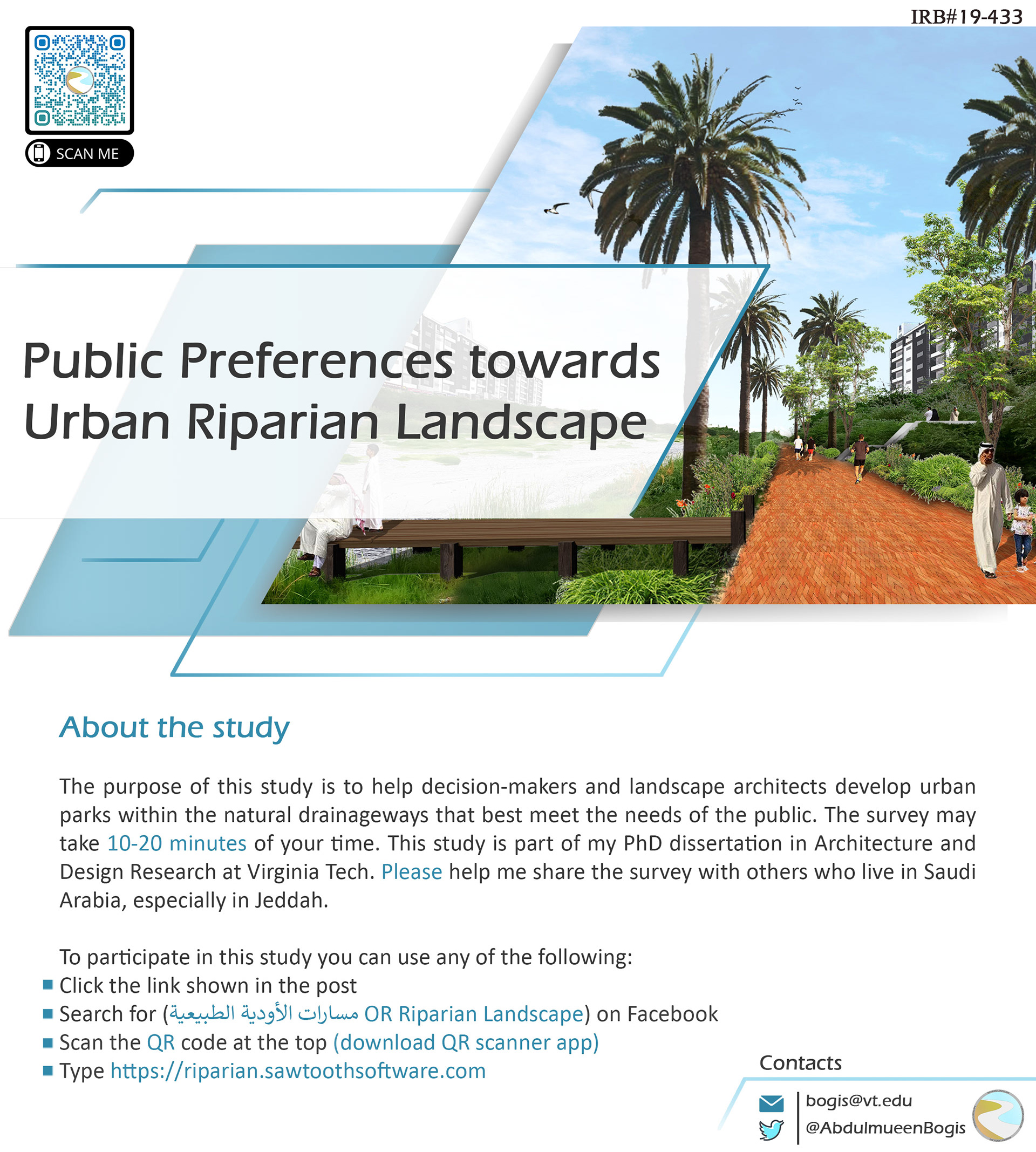
Recruitment Flyer
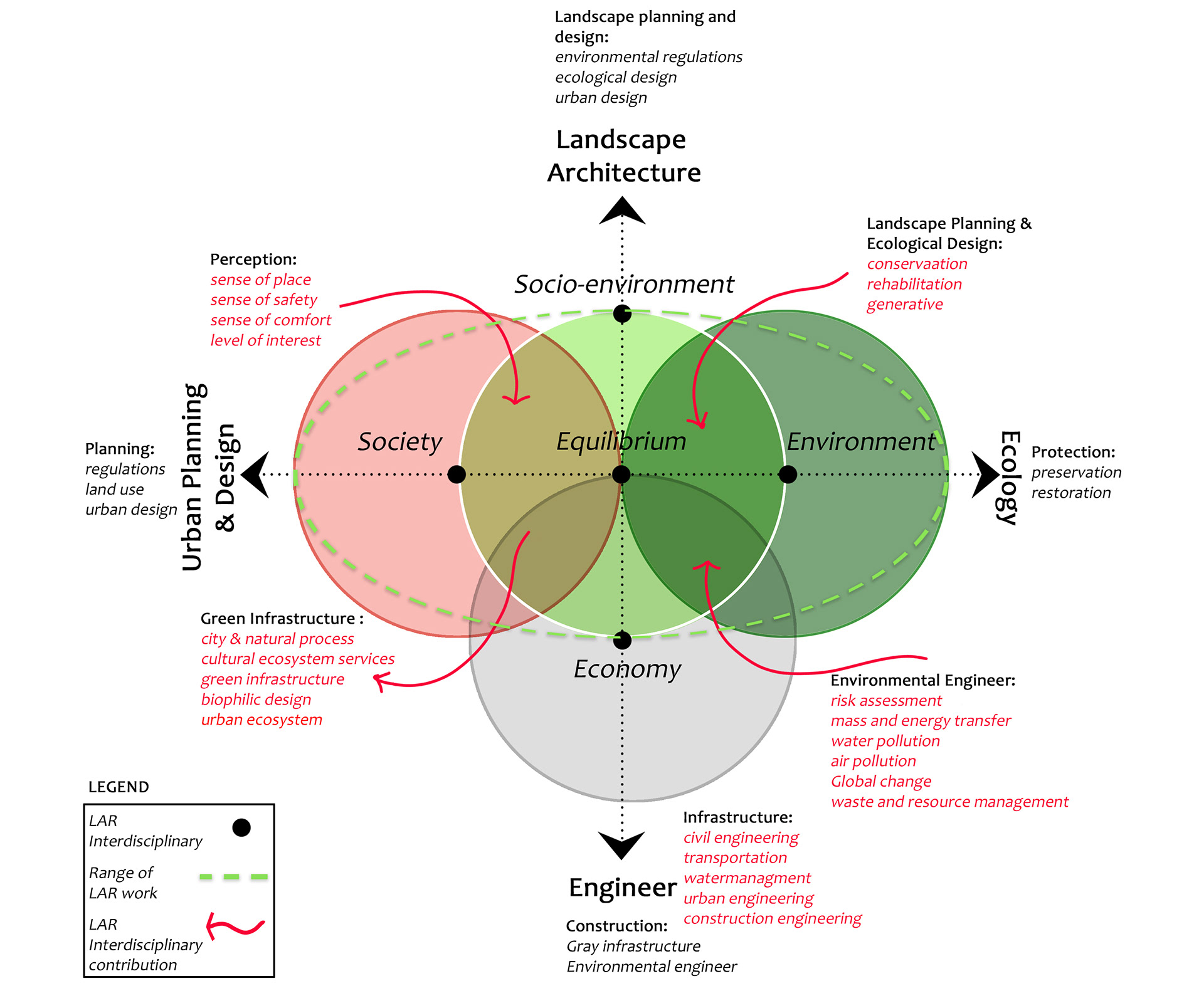
Knowledge Contribution
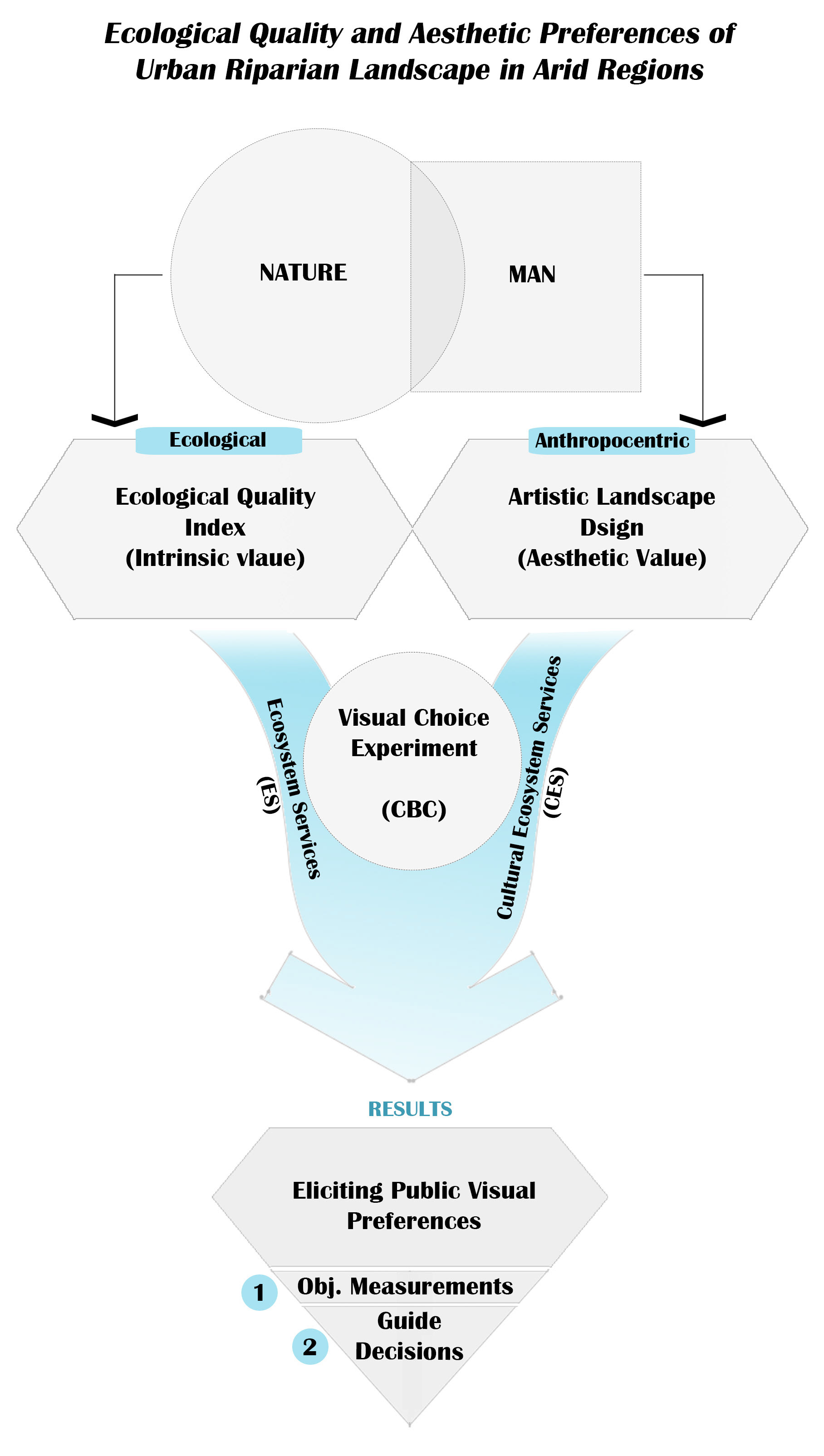
Study Focus
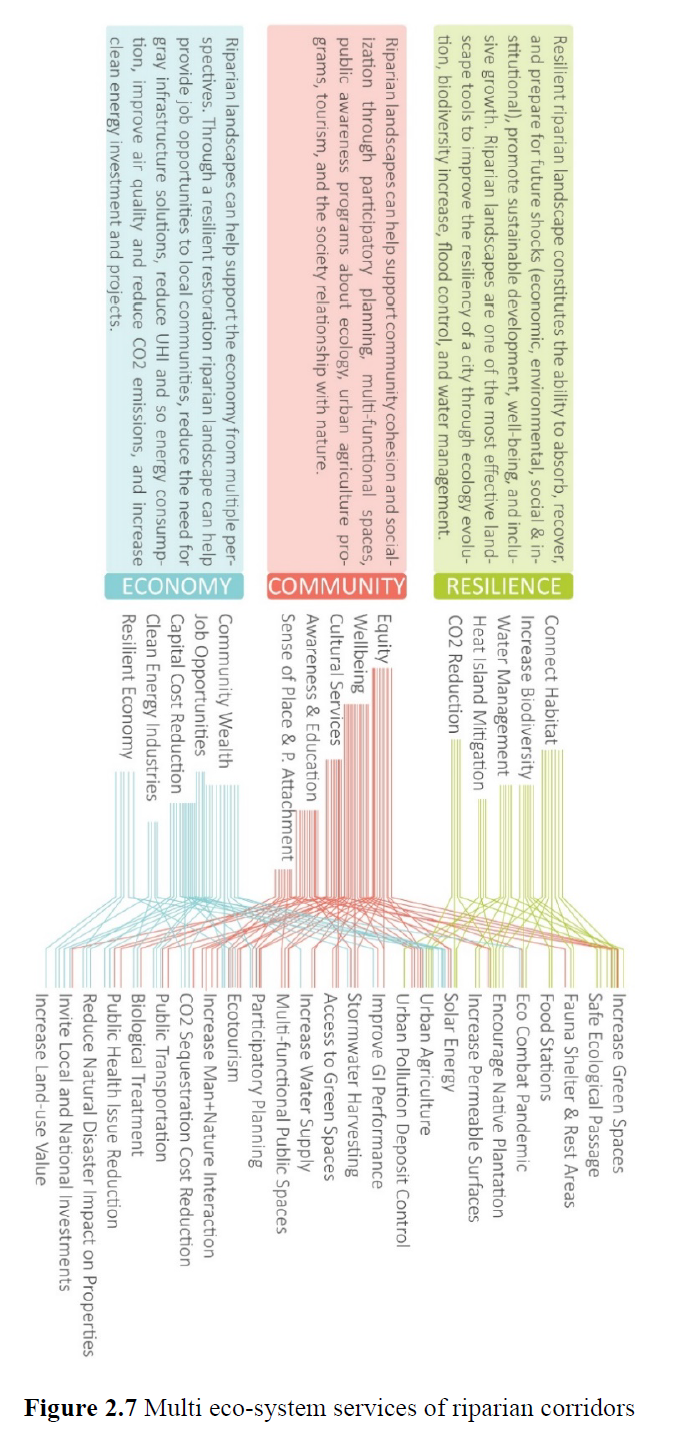



The Visual Experiment
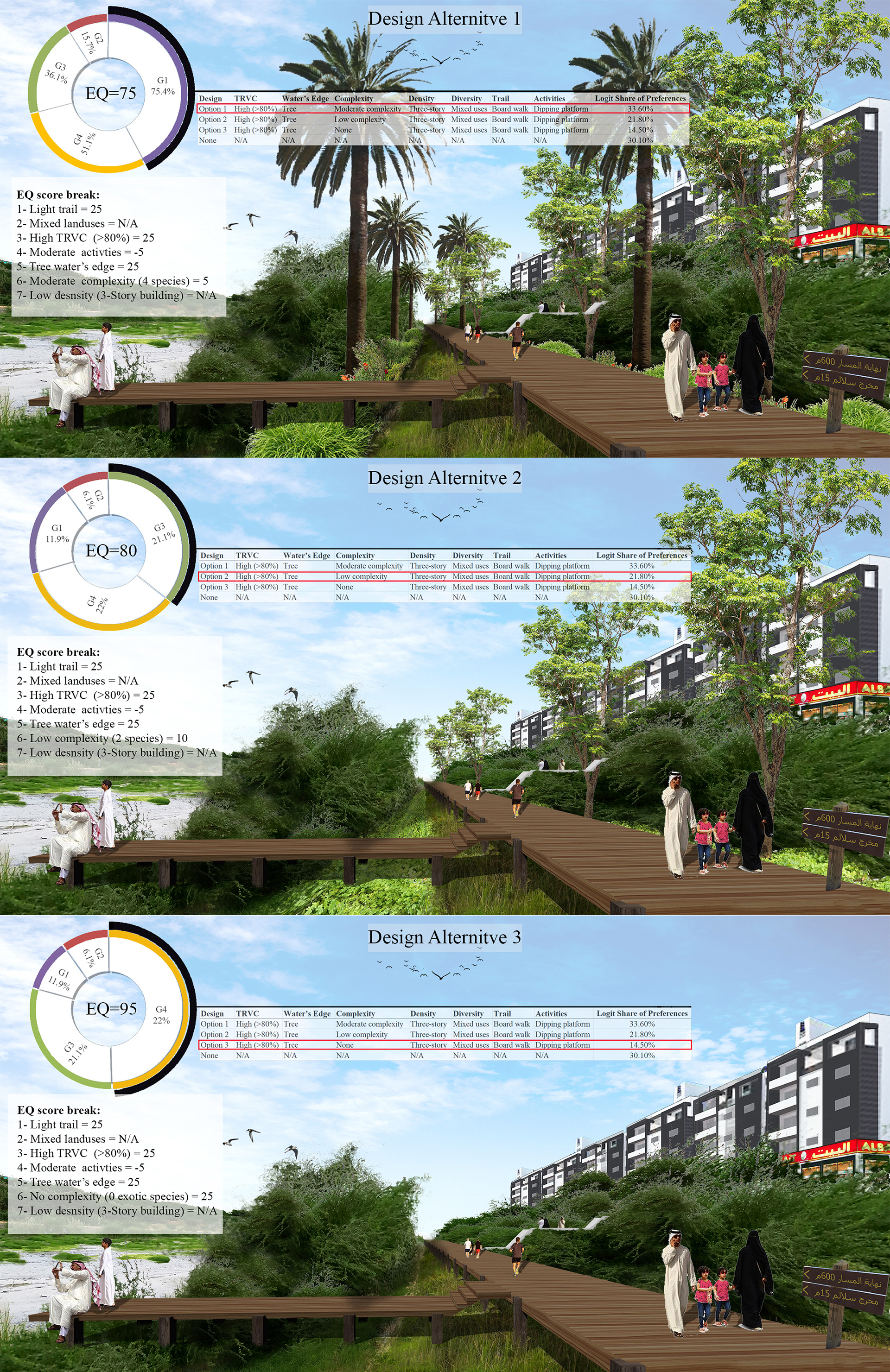
Design Scenarios of Minimum Landscape Design Interventions and Predictions for Participants' Preferences
